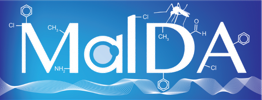The Human Chk1 Inhibitor CHIR-124 Shows Multistage Activity Against via Dual Inhibition of Ark1 and Hemozoin Formation.
Journal:
bioRxiv : the preprint server for biologyAbstract:
The high burden of malaria and growing resistance to frontline antimalarials demand new drugs with reduced propensities for generating resistance. An attractive approach to identifying chemical hits as starting points for antimalarial drug discovery involves the repositioning and chemical optimization of compounds used in other disease areas that are active against the human malaria parasite . Here we show that the human checkpoint kinase 1 (Chk1) inhibitor CHIR-124 is active against both drug-sensitive and drug-resistant asexual blood stage parasites and competitively binds to several kinases, including aurora-related kinase-1 (Ark1). The compound also shows moderate activity against both the liver and gametocyte forms of the parasite. Further target investigation for CHIR-124 via conditional knockdown experiments confirmed that Ark1 is implicated in its parasiticidal activity. Notably, CHIR-124 also inhibits β-hematin (synthetic hemozoin) formation and causes a dose-dependent increase in free heme that correlates with inhibition of parasite growth. These findings suggest that polypharmacology is involved in the activity of CHIR-124 against via the dual inhibition of Ark1 and hemozoin formation, both essential for parasite proliferation. This is further supported by drug combination experiments, morphological studies and resistance generation attempts. This study demonstrates the feasibility of designing dual kinase/hemozoin formation inhibitors active against resistant strains with decreased resistance risks in the fight against malaria.
